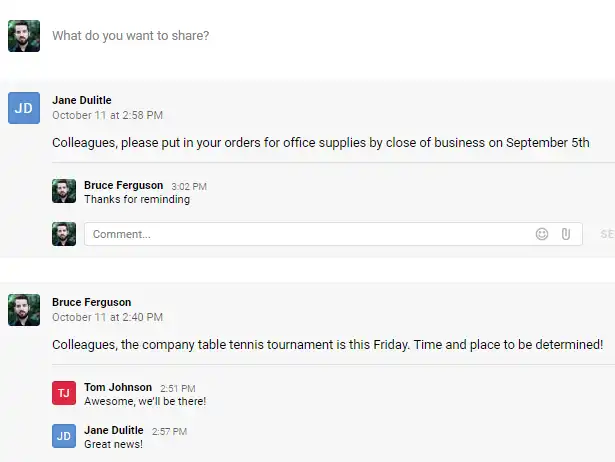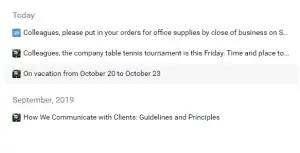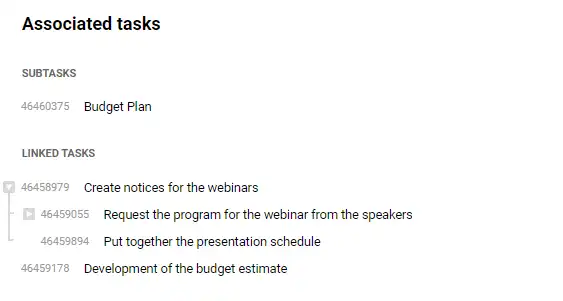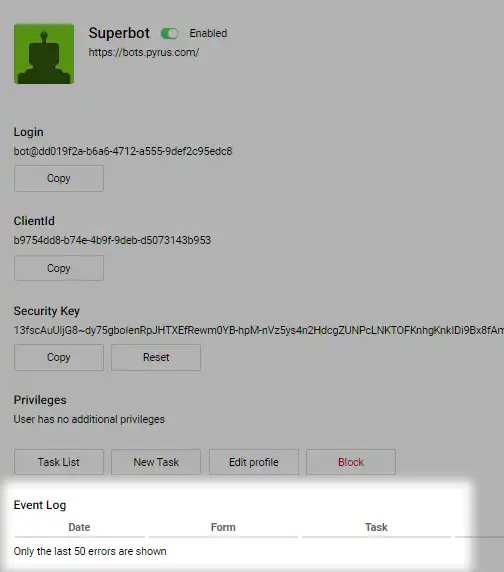Pyrus users have received a rich harvest in this of Autumn, as we unveil a whopping seven serious updates.
- You can now post announcements. Announcements in Pyrus provide a convenient way to communicate useful information to the team: share a piece of news about the company, inform co-workers that someone is out of the office, introduce a new employee, or publicly congratulate somebody. This feature is a full-fledged newsfeed that makes it easy and enjoyable to scroll, read, post, and comment. You can scroll through the feed quickly and efficiently, without having to click on anything.

When someone comments on an announcement, it automatically moves to the top of the feed, so you’re always up on the latest news. Something social networks and messengers don’t have, and Pyrus does: an additional calendar feed. It’s located on the right side of the screen, and shows the announcements, organized by day, month, and year. You can scroll through this feed separately, and find the posts you’re looking for in seconds, without using the Search function.

If you work in Pyrus, your hands are now literally untied: you can leave comments on tasks in the mobile app as voice notes. In the Comment field, you will see the microphone icon you already know from using messengers. You don’t have to use this function, but it will help many respond to urgent tasks from the car, or on the go, more quickly and safely.
The user profile, login page, and preferences page have changed. The login, password, additional email addresses, and other authentication parameters are now grouped together on a separate page. The text fields are larger, and entering data in them has become more convenient. This is a good excuse to check whether all your information is in order. The profile page shows the employee’s contacts, roles, title, and other information very conspicuously. The Preferences section is now structured in a clearer and more precise way, and is easier to use. See for yourselves:

The Tasks page interface has changed: it is now contextual, and changes based on what you’re doing — writing a one-off comment, or working extensively on a task.
You already know that in Pyrus you can see the type of relationship between tasks. This helps manage processes, and have a comprehensive picture of the project, with all its stages. Now, you can see not only the type of relationship between tasks, but also their hierarchy. This is useful for when sub-tasks and simple related tasks create new sub-tasks. To see where a task is rooted, click on the button with the arrows, on the right side of the screen. A hierarchy tree looks like this:

- For those who use bots to automate their processes, it is now easier to manage them. A number of parameters for the bot’s behavior are programmed right in Settings, in the bot’s profile. This may be a text message or email that it will send only when a certain event takes place, for example. You can also monitor the bot’s deviations from the programmed script right in its profile: they are recorded in the Events log at the bottom of the page.
